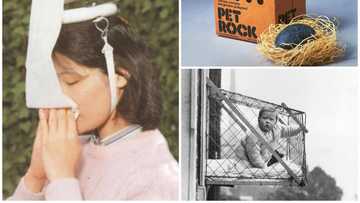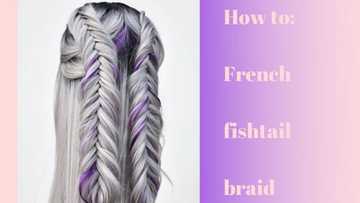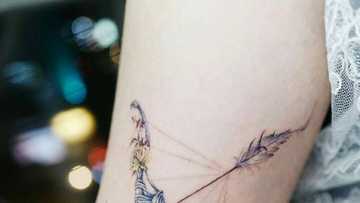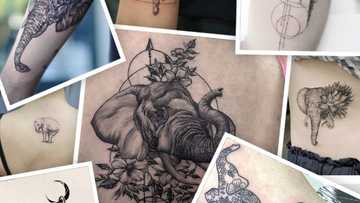Conch Piercing: a guide to pain, healing, aftercare, inner vs outer piercing
Are you looking to try out a trendy and more stylish ear piercing that stands out? A conch piercing should be your next move. The process involves perforating your ear’s largest cartilage, usually located towards the middle. This section resembles a conch seashell in appearance, and that is where it got its name. The probability of finding someone rocking this look is high, but very few know of its name and why many people prefer it. If you are looking to learn what is conch piercing and how you can achieve it without much struggle, then read on.
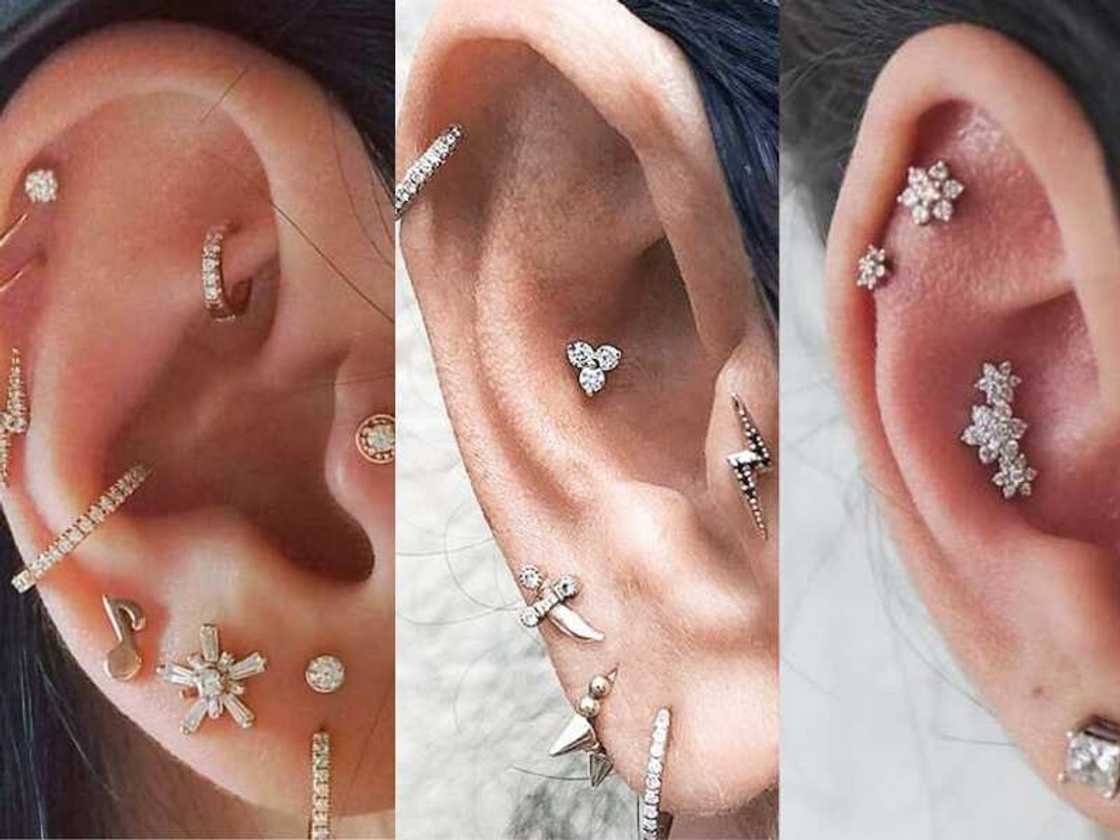
Source: UGC
It has gained popularity over the years, but only a handful understand the entire process from piercing to the aftercare. So before you decide to upgrade to a more stylish fashion statement, there are several things to learn about.
Inner vs outer conch piercing
There are two ways of getting it right with the look: either you have an outer conch piercing or inner conch piercing. The inner conch is that area right beside your ear canal that is cup-shaped and located towards your ear’s central region. Its piercing is usually in your lower cartilage, and it is slightly harder to get into using a needle. However, this would not be a challenge for professional piercing artists. A 16-point hollow needle can be ideal for this form of cartilage piercing.
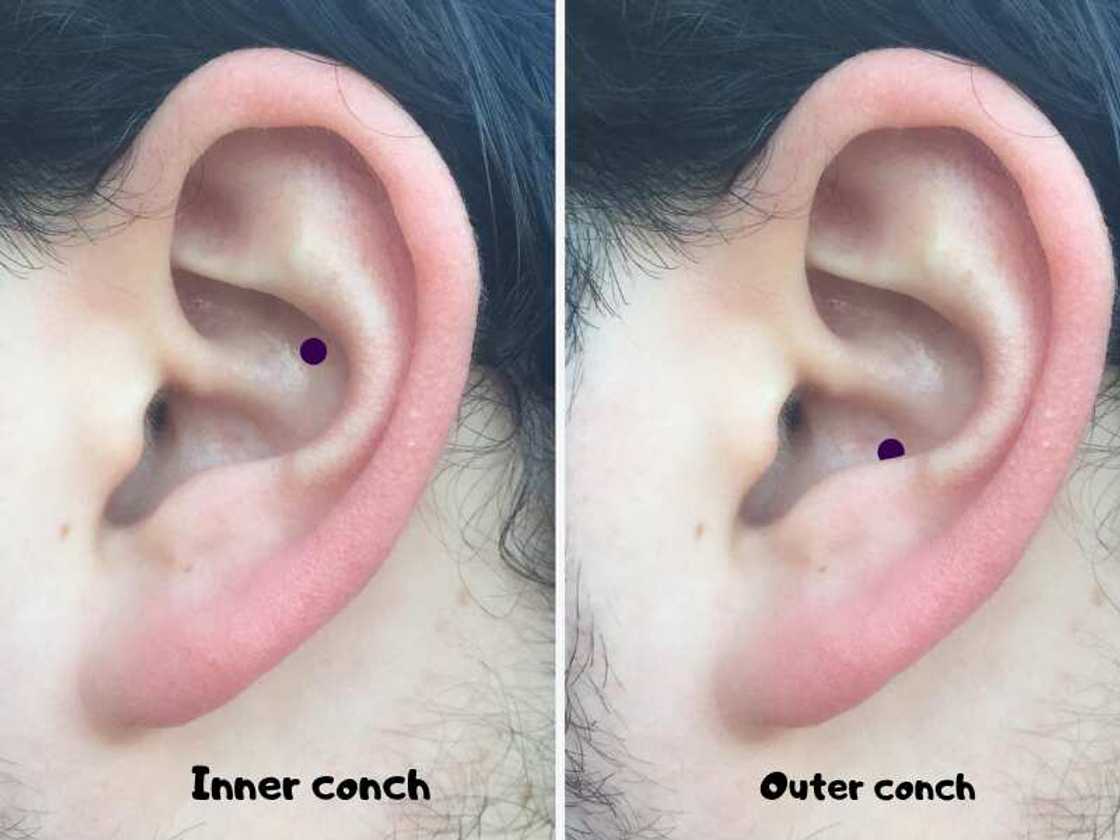
Source: UGC
Outer conch, on the other hand, is the flat piece that lies between the antihelix and helix. Its piercing is located on the cartilage’s upper part, and you can achieve a catchy hoop on the outer ear ridge. If you are a more experienced piercing enthusiast, then you can try the double conch piercing or triple.
READ ALSO: Factors affecting wound healing
Conch piercing pain
Many people usually ask; How bad do conch piercings hurt? The different types of piercings come with different pain intensity, which also varies from person to person. Actually, what matters most is the method used to get your conch pierced. For instance, you would experience bearable pain if your piercer used a needle. You would experience the same pain intensity as the helix piercing. However, the pinch will be harder than when piercing your earlobe.
So, which is the most painful piercing to get? If you prefer a bigger hole for larger gauge jewelry, then it is advisable that you get a dermal punch. It may not be a great idea, but if you fancy bigger gauges, getting the punch would be ideal. This is because it creates a bigger hole than that one of the normal needle.
Those who have gone for it report greater pain. This may be due to the larger hole and the fact that the piercer actually removes a round area of cartilage and tissue. Also, the hole created with this process is permanent, so you do not have to worry about sealing even when you have taken a break from jewelry.
Whatever method you choose for your conch piercings, never look at the pain you will have to endure, but the beautiful piercing that will end up on your ear. Also, you have a variety of great designs to choose from for your ear.
Understandably, you may feel that you cannot stand the pain yet you still find the style irresistible. In this case, you should go for the conch ear piercing.
Tips on how to clean piercings
You definitely do not have the time to deal with infections that also ruin your beautiful ear and jewelry. Here are tips on how you can take care of your piercings:
- Avoid piercing guns –As convenient as it may seem, this is the biggest mistake that most people make. The gadgets cause unnecessary damage to the tissue and is more painful. Needles, on the other hand, offer more control in terms of accuracy and are also sterile.
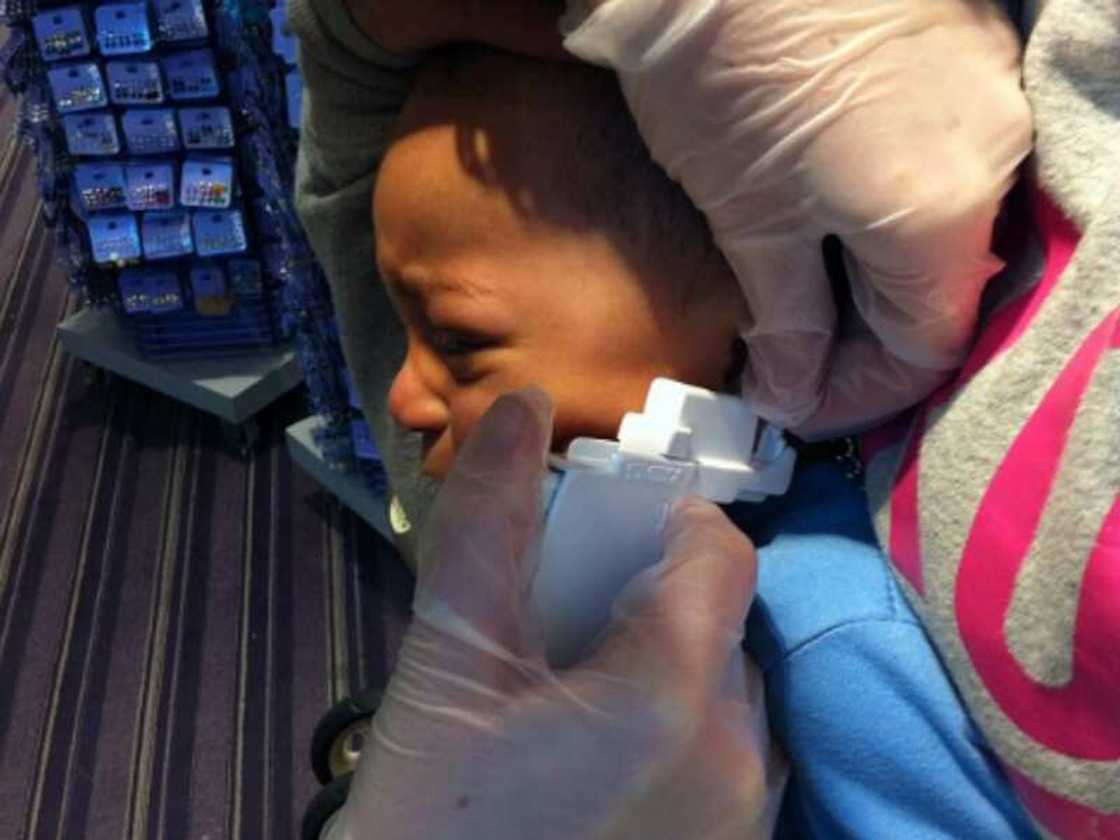
Source: UGC
- Clean your piercings well –You need to clean the new piercing two times per day. To get that perfectly clean piercing, just rub some warm salt solution on the healing area with a cotton swab. Afterward, it should be dried with a clean paper towel.
- Stay hydrated –It is advisable that you maintain your overall body health, and there is no better way of achieving this than keeping the body hydrated. Also, do your best to prevent extra trauma on the piercing area.
- Avoid touching your ear –Happy piercings are those that are admired, loved but never touched with dirty fingers. Also, avoid twisting the jewelry during the healing period, let it heal naturally and without interruption.
- Avoid shampoos or other harsh skincare products –The products can inflame or irritate the healing area leading to swelling, redness and delayed healing. This, however, does not mean that you should avoid taking a shower, but practice caution or use a head cover.
READ ALSO: How to pierce your nose at home?
Tips for conch piercing healing

Source: UGC
When it comes to any form of piercing, patience is key. The entire healing process may take six months to a year, and you should be ready to take care of your piercing to achieve the best results possible in due time.
First, how do I know if my ear piercing is infected? Here are some hints that you should not avoid if you have a new piercing:
- Redness
- Swelling
- Tenderness
- Burning or itching sensation
- Pain
- Yellow discharge
Whenever you notice any of the above symptoms, it is advisable that you seek medical attention as fast as possible.
Be patient
One huge mistake that people make is being unrealistic to themselves. You need to be patient and acknowledge that piercing should take time to heal and may remain swollen during the process. So it may be impossible to pierce using those tiny cuff hoops in the initial stages. This also applies to the removal of the earring where it should be done after six or more weeks. You can twist the earrings a few times every day to keep the pierced holes open.
Healing can be longer if you have an infection
People with new piercings tend to be really anxious about when they will be completely healed. As time flies, you will tend to be more interested in knowing how long you will continue with the annoying cleaning regimen. There are several things that require consideration when making such estimates. First, you should know that the timelines issued are settled at by assuming you did not experience any setbacks or infections during healing. If bad inflammation or infections occur, healing may take longer.
Consult a specialist
Other factors that can prolong the healing process is how well your piercing specialist did their work, the area with the piercing, and the type of starter jewelry you choose to use. So if possible, you can first consult with them on your readiness to stop cleaning the healing section for good.
Before you finally go for any type of conch piercing, it is advisable that you research extensively. For better results on either outer or inner ear piercing, ensure that you follow the above instructions and directions. Not only will you be able to heal faster, but you will also get to avoid infections that may prolong the healing.
READ ALSO: Cartilage piercing: a guide to pain, cost, healing, and aftercare
Source: Legit.ng


